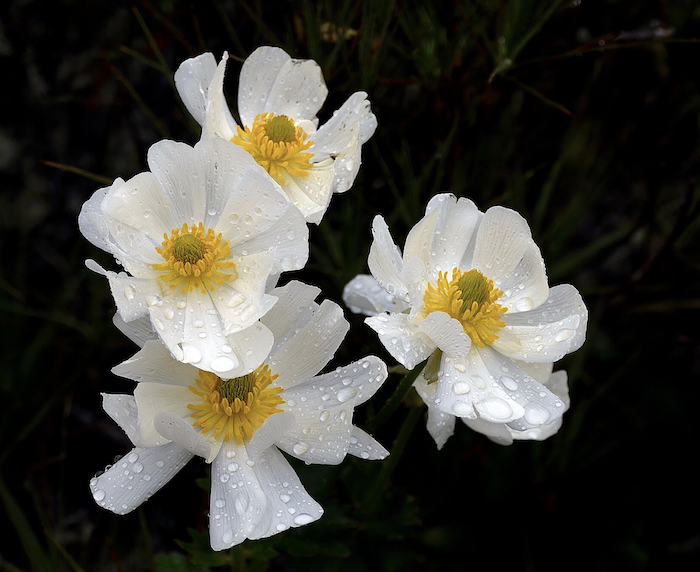One of New Zealand’s most well-known alpine plants the Mount Cook buttercup (Ranunculus lyallii) can grow over a metre tall. It is particularly striking when growing in large numbers with its white flowers and glossy leaves which can grow larger than the size of your hand.
The cup-like leaves can be a trampers friend as they often hold water after a rainfall. Like others in the buttercup family it has developed a clever way to help its survival in the harsh alpine environment. Plants have stomates or pores in their leaves which let water in and out. Most plants have their stomates on the cooler, shaded underside of the leaf so they are less prone to drying out. But as the Mount Cook buttercup often grows among rocks which heat up during the day it has evolved to have stomates on both sides of its leaves.
It grows in sub-alpine to alpine herb fields and the side of creeks in the South Island mountains from 700m to 1500m in altitude. The Mount Cook buttercup flowers between October and January.
It’s Latin name (Ranunculus lyallii) comes from ranunculus, meaning little frog which probably refers to its typical marshy habitat. Lyallii refers to David Lyall a 19th century naturalist and surgeon with the Royal Navy. When Lyall first discovered the plant in the mid 1800s he only collected the leaves which resembled a lily so the plant was incorrectly known as the Mount Cook lily. A decade later it was identified as a buttercup when Sir Julius von Haast and Dr Andrew Sinclair collected flowering specimens.
Photo : Sian Reynolds, Wikimedia Commons Bernard Spragg


